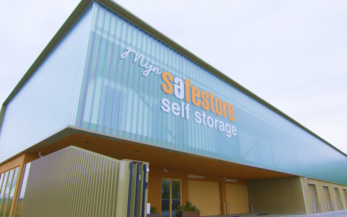5 minutes09/19/2017
Written by Timo Kronlöf
I admit that identifying failures can actually lead to better safety practices. In conventional safety management we are constantly looking to spot non-conformances, hazards and risks in order to meet official compliance standards and our own self-set requirements. When issues arise, we go about putting measures in place to ensure that things can be done better next time, learning from our mistakes to minimise the further likelihood of accident or incident. This approach works and we all have seen the results in accident rates.
But should we really be basing our next steps for safety planning simply on rooting out the negatives and flaws in our operations? What if your team has a high rate of safety, and there isn’t a record of severe incidents or clear failures by which to measure future actions? The answer is to introduce leading indicators that are formed to measure preventative actions, rather than examining negative events that have already occurred. Leading indicators are an important step forward, but they also have some challenges.
The most popular leading KPIs are derived from safety observations, various safety audits or safety rounds. Whilst this sounds good in theory, if we take a closer look at those safety audits or rounds, it usually reveals a more interesting reality – that audits are constructed to seek negative behavior, risk taking and failures. Highlighting these indicators for a rising potential of accidents should make people feel more positive that problems are being seen and attended to – right?
More to measuring safety, consider one of the most common and universal safety KPIs: Cumulative Lost Time Incident Frequency (also referred to as LTIF or LTAFR.) Starting the new year from zero in January, data cumulates further up the curve every month, with new accidents and failures making the curve extremely volatile at the beginning of the timespan in question and finally, towards the end of the year, you are left with an indication of whether the year’s numbers are going to be good or not. So, you have plenty of days left to react, don’t you? But don’t worry if you fail, as the new year will bring the counter back to zero before you start cumulating the numbers all over again. Keep demonstrating your management commitment and pushing your zero-accident goal to the work force, and of course they are going to praise it, aren’t they?
What if we led other functions in our organisation with a similar approach?
Let’s think about sales. In sales, we measure outcomes and the actions we used to get there. What if we didn’t measure meetings, actions or new deals, but instead measured the sales that didn’t occur or the failings to get a new deal? Sales managers would make sales audits to collect and report fails in processes and human mistakes in sales pitches. We could rate our personnel on the basis of how poor they are, set goals on how many fails and non-sales take place, missed meetings and the complaints we should gather this year. The management team would only get reports on how many mistakes, failures and poor assignments had been done in a week. The most important KPI in sales could be lost cash sales frequency (LCSF), which could measure all the lost deals with more than 2 000 (€/£/$) potential per million sales hours. This approach would definitely motivate the sales rep to lift the phone after another conversation with an annoyed buyer from an unqualified lead that was a waste of time for all parties.
Would this motivate our sales people to try their best? If the answer is no, then why should it be any different in the field of safety? We should always look to adopt more positive approaches to safety management. I’d like to see safety leaders measure safety successes such as positive safety observations, completed safety tasks, conducted safety rounds, learned lessons from safety toolbox talks, the number of shared good practices, safety trainings, the number of prevented accidents, activity and engagement of workforce, trends in safety attitudes and culture, the effect of good safety practices to operative goals and saved working hours. It only requires a little thinking to turn the bigger picture around from the negative to the positive. I think we can, and should do it, even if it might be a slow process. This is the way to lift the status and weight of safety in our organisations. Remember that in general, much bigger portion of our actions lead to positive outcomes than negative ones. The higher the safety level is, the less negative outcomes or problems there are to measure and the more important it is for you to start shifting your focus.
I would love to hear your comments, since personally, I feel a need for change from the old way of doing things that I’ve seen in a countless number of organisations throughout my professional life. Fortunately, there are a growing number of exceptions, and more organisations have the necessary intentions to shift their focus towards the positive elements of safety management.
Please share your own ideas if you also feel it’s time to turn the focus of safety management away from negativities, dangers and problems.



